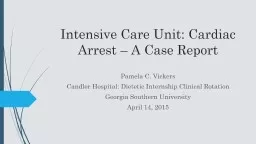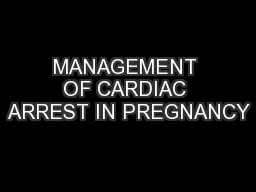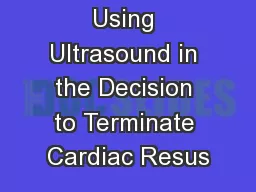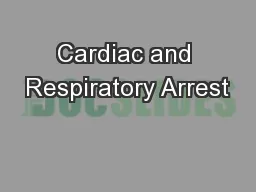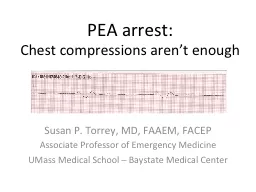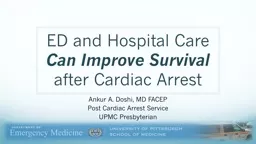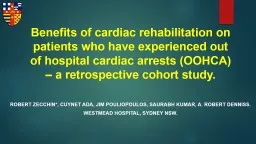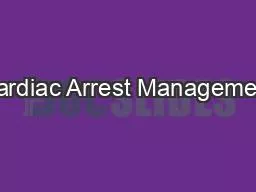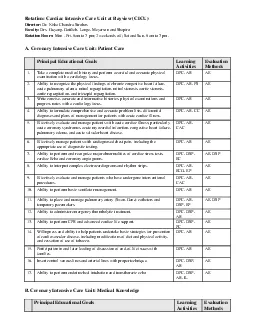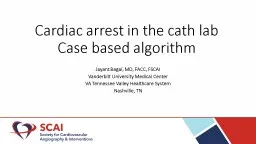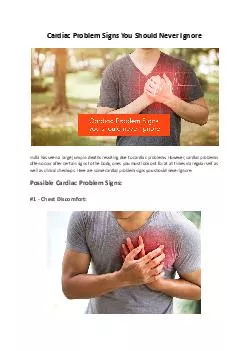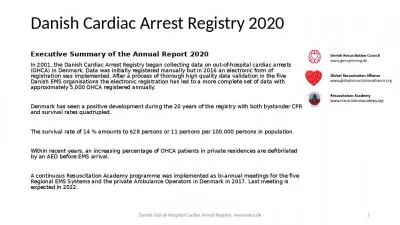PPT-Intensive Care Unit: Cardiac Arrest – A Case Report
Author : reimbursevolkswagon | Published Date : 2020-06-17
Pamela C Vickers Candler Hospital Dietetic Internship Clinical Rotation Georgia Southern University April 14 2015 Patient Data Name Mr X Sex Male Age 53 years
Presentation Embed Code
Download Presentation
Download Presentation The PPT/PDF document "Intensive Care Unit: Cardiac Arrest – ..." is the property of its rightful owner. Permission is granted to download and print the materials on this website for personal, non-commercial use only, and to display it on your personal computer provided you do not modify the materials and that you retain all copyright notices contained in the materials. By downloading content from our website, you accept the terms of this agreement.
Intensive Care Unit: Cardiac Arrest – A Case Report: Transcript
Download Rules Of Document
"Intensive Care Unit: Cardiac Arrest – A Case Report"The content belongs to its owner. You may download and print it for personal use, without modification, and keep all copyright notices. By downloading, you agree to these terms.
Related Documents

